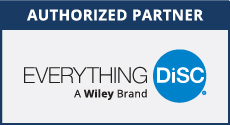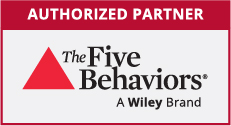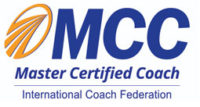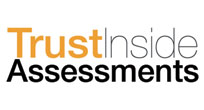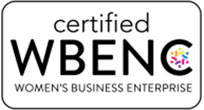People-Whispering Tip
“Warmth is the conduit of influence.”
~ Cuddy, Kohut, and Nefinger, HBR July/August 2103 issue
“One looks back with appreciation to the brilliant teachers, but with gratitude to those who touched our human feelings. The curriculum is so much necessary raw material, but warmth is the vital element for the growing plant and for the soul of the child.”
~ Carl Jung
“If your emotional abilities aren’t in hand, if you don’t have self-awareness, if you are not able to manage your distressing emotions, if you can’t have empathy and have effective relationships, then no matter how smart you are, you are not going to get very far.”
~ Daniel Goleman
“Politeness is to human nature what warmth is to wax.”
~ Arthur Schopenhauer
“I like to combine the dramatic emotional warmth of strings with the grooves and body business of drums and bass.”
~ David Byrne
First Connect, Then Lead: Positive Influence Involves Balancing Competence with Warmth
Many leaders in the workplace today adhere to the school of thought which says you should lead with an emphasis on your strength, your competence, and your credentials. When I graduated with my MBA from Emory (I am not revealing the year), the term “emotional intelligence” had not even been coined yet, at least not in mainstream conversations.
Interestingly enough, according to an article in the Harvard Business Review’s July-August 2013 issue by Cuddy, Kohut, and Neffinger, what we were taught – meaning to lead with our resume – is exactly the wrong approach.
A growing body of research suggests that influence – and leadership – begins with warmth. Warmth facilitates not only trust but also the communication, absorption, and retention of ideas and knowledge. In fact, prioritizing warmth helps you immediately connect with those around you, demonstrating that you hear them, understand them, and can be trusted.
While it is true that we notice many traits that people possess, our assessment of a person’s projected dimensions of warmth and strength are the most influential factors. Researchers say that these two attributes account for more than 90% of the variance between our positive and negative impressions of the people we interact with on a daily basis. If you think about it, this makes perfect sense because together, these dimensions answer two essential questions:
- What are this person’s intentions towards me?
- Is he/she capable of acting on those intentions?
Common sense and personal experience, as well as decades of research in sociology and psychology, show us that “before people decide what they think of your message, they decide what they think of you.”
This is not to downplay the importance of your strength, competence, and intelligence quotient in today’s workplace. It is just that leaders who project strength before establishing trust run the risk of eliciting fear, along with a whole host of dysfunctional behaviors. This is why in our program, “The Five Behaviors of a Cohesive Team,” based upon Patrick Lencioni’s The Five Dysfunctions of a Team, trust is the foundational piece that must be cultivated first.
Fear created by a lack of warmth and caring not only undermines the essential element of trust, but can also inhibit cognitive potential, creativity, and problem-solving. For these and other reasons, employees often disengage. In short, putting competence first undermines leadership. If you are highly competent but don’t show enough warmth, people may go along with you, but you won’t earn their full engagement and buy-in.
Without a foundation of trust, people may outwardly comply with what the leader asks of them, but they are much less likely to conform when the leader is not around. Worse still, even their best efforts are half-hearted and the organization (and ultimately its customers) are not getting the benefit of that person’s full energy, heart, and soul.
We’ve all seen workplaces that lack trust. The people exhibit an attitude of “every man/woman for him or herself.” If fear is present, people will not adopt the values, culture, and mission of the organization in a sincere and lasting way. Instead, they go through the motions and never break through to have meaningful conversations with healthy, productive conflict which is necessary for creativity and innovation to thrive. To learn more, listen to my webinar on Building and Fostering a Cohesive Team.
What can you do to project authentic warmth as well as strength?
As always, the DiSC Model can be a helpful tool to diagnose and prescribe ways to best adapt one’s behavior for leadership and team effectiveness. The DiSC Model is a needs-based model based upon two key dimensions: the first is one’s tendency for affiliating or detaching. This tendency is the most relevant to the subject at hand, but the second underlying tendency, to either control or adapt to the needs of the situation, is also significant. I will address that topic in a future article.
To keep it simple and clear, bear in mind that people who are high in Influence and people who are high in Steadiness have a natural propensity to affiliate, while those high in Dominance and high in Conscientiousness do not.
What can High D’s and High C’s learn from High i’s and High S’s about the desire to affiliate and project more warmth?
Here are some practical tips:
Become aware of the nonverbal messages you are sending. Recognize that even small nonverbal gestures – a nod, a smile, an open gesture – can show people you are glad to see them and are open to hearing what they may have to share.
Smile and mean it. Find some reason to feel genuinely happy in work-related social situations, such as focusing on one particular individual just as you would when interacting with a friend or family member.
Ask questions of the other person and truly listen to their responses. To paraphrase Dale Carnegie, taking a genuine interest in other people makes them interested in you and what you have to say.
Learn about Empathy and Emotional Intelligence. I recently gave a talk “Demystifying Emotional Intelligence” which will be posted on my YouTube channel shortly. Also, check out this link for developing empathy skills. click here
Acknowledge the positive intention behind a potentially ineffective trait using DiSC as your “decoding device.”
- If a person with the High Dominance style becomes dictatorial, acknowledge their strong, assertive nature.
- If a person with the High Influence style becomes overly talkative, acknowledge their people-person tendencies.
- If a person with the High Steadiness style displays the tendency to keep the status quo and won’t stretch into new behaviors in a changing environment, acknowledge their ability to be the calm in the storm for others.
- If a person with the High Conscientiousness style starts to gather details to the point of paralysis by analysis, acknowledge that they never let anything slip through the cracks.
Habits to Avoid
1. Jumping right into the task without any connecting conversation.
2. Sending fear-producing nonverbal signals, even if they are unintentional.
- Avoid standing with your chin pointed down.
- Don’t pivot away from the person you are talking with.
- Avoid cutting motions or closed hand positions.
- Avoid crossing your arms in a defiant way – when you are cold, that’s a different story!
- Avoid sitting or standing in an aggressive position such as Mr. Potter at his desk in the classic movie “It’s a Wonderful Life.” The main character, George, has to ask Mr. Potter for money while Mr. Potter looms over him from behind a desk that is much higher than George’s chair. We might laugh at this scene, but I have had a manager greet me with his feet propped on his desk as I walked in to meet him for the first time. Since he did not get up to shake my hand or truly acknowledge my presence, he telegraphed arrogance and certainly not warmth. This was hardly the way to engender a trusting, effective relationship!
3. Being unaware that invoking fear is not effective. If this was your belief system, hopefully I have given you enough evidence and tools in this article to change your perspective as well as your behavior.
For assistance in applying any of these best practices into your workplace for more powerful, effective results, feel free to call us at 404-327-6330 or email Laura at Laura@lauraadavis.com
Check out our DiSC® and other assessment-based solutions at http://demo.everythingdisc.com and http://demo.fivebehaviors.com.
We are here to help create healthier, happier, more profitable workplace environments for all.


